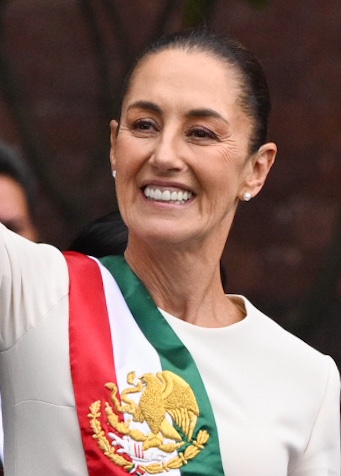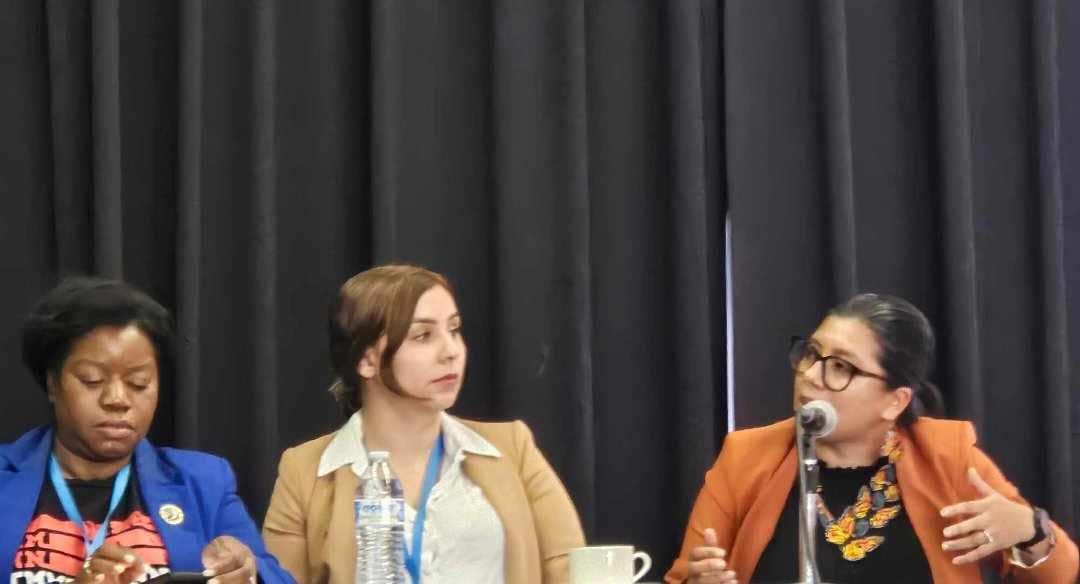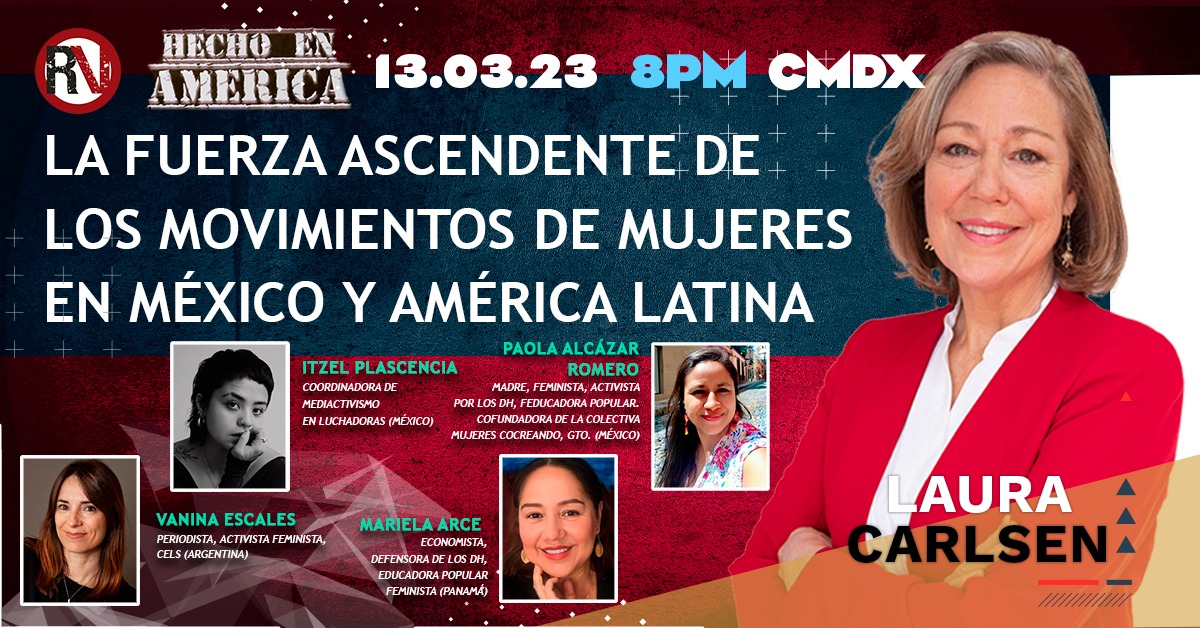Tired of waiting for the slow transfer of lands from the state and the always problematic recognition of their rights, dozens of Mapuche communities have begun to mobilize, a process that the Chilean government has responded to with extreme harshness.
Thousands of Mapuches arrived at midday on Oct. 22 at the Municipal Council in Temuco (capital of the Araucanía, 700 kilometers south of Santiago) to denounce the violence used by police when they shot pellet at children. "After arriving in the center of the city, a group of Mapuche children from the community of Ercilla opened a sack that contained the remnants of over 200 tear gas canisters, cartridges, and police issue bullet shells," according to the Azkintuwe newspaper.1

|
| "We the Mapuche children do not want any more RAIDS." Photo: www.wallmapuwen.cl. |
The protest, organized by the Mapuche Territorial Alliance (Alianza Territorial Mapuche), had as its objective to refute the claim that no children had been wounded during the intervention of police forces in the zone. The lonko (Mapuche authority) Juan Catrillanca, pointed out that in a police raid, seven children from the local school were wounded by pellets and as a result they coordinated this march that is watched over by a strong police contingent.
"We are not afraid of the Chilean State and its use of violence, our path continues toward the national liberation of the Mapuche. We know that we will continue resisting in our communities," said Mijael Carbone, werken (director) of the Alliance, to the crowd.
"We are all here, the wounded children are here. We can all see them. My son Pablo is here with just one eye, the mothers of the babies that were gassed one week ago in Temucuicui are here. Carlos Curinao, brutally beaten by the police the same day is here. None of them received proper medical attention. We have come peacefully to demand respect one more time," stated Catrillanca.2
Despite the fact that the authorities deny it, both the church and international organizations have confirmed that children were wounded by pellets. Gary Stahl, representative of UNICEF in Chile, was very clear when he said: "In order to ensure that another generation of Chileans is not marked by violence, we need to know what has happened, and find a solution so that this does not repeat in the future."3 On Oct. 5 a 14-year-old child from the Rofué community was shot, arrested, loaded into a helicopter, beaten, and tied up by police forces who threatened to throw him out of the helicopter once they were in the air if he did not agree to give the names of those who participated in the takeover of the Santa Lucía estate.
Human rights organizations have provided dozens of cases from the last two years in which minors were shot with pellets and beaten by the local police as well as militarized police in Chile. "As of today we have not seen one impartial investigation to uncover the truth of what happened," added Stahl after demanding, on behalf of Unicef, that the administration of President Michelle Bachelet take measures to ensure the protection of Mapuche children.4 The indignation overcame ethnic barriers that week when the minister of the Interior accused the Mapuche parents of using their children as "shields" in their taking of lands. The statement provoked a wave of anger across the country from south to north.
Land and Poverty in the Araucanía
Poverty levels in Chile reached 22.7% of the population; however, among indigenous peoples it has reached 35.6%. Indigenous families earn nearly half the income that non-indigenous families do. Education among indigenous people is 2.2 years less than the national average of 9.5 years and just 3% of the rural Mapuche population has received any secondary education by the age of 15. Just 41% of indigenous households have access to sewer systems and 65% have electricity. Infant mortality rates in some indigenous municipalities are 50% higher than the national average.5
The human development index among the Mapuche population is less than the non-indigenous population (0.642 to 0.736). The lowest indices in the country are found in the rural areas of the Araucanía (the Mapuche territory south of Bio Bio) at 0.549, but the Mapuche woman has an even lower index of 0.513. In addition to being poor, they are discriminated against, "almost completely in the media and in particular in television,"6 for example. The Mapuche have no representation in Parliament.
However, the state has stood up to an active policy in favor of indigenous peoples and the Mapuche in particular. The National Corporation for Indigenous Development (CONADI, Corporación Nacional de Desarrollo Indígena) through the Fund for Indigenous Lands and Water (Fondo de Tierras y Aguas Indígenas), has transferred some 200,000 hectares to the Mapuche since 1994, benefitting more than 10,000 families. The numbers are insufficient as it is estimated that 200,000 more acres should also be appropriated. Additionally, many of the families have received individual titles, not communal ones. The process is very slow, leaving out many communities, and there are no support programs in place.7
Among the Mapuche there are many complaints in regard to the fact that none of the official programs have consulted with the communities. An evaluation of state policies in 2003 resulted in the special rapporteur from the UN Human Rights Council, Rodolfo Stavenhagen, concluding that "despite having produced important advances during the last 10 years, these [people] continue to live in a situation of marginalization and negation that keeps them separate from the rest of the country."8
The situation has worsened due to the impressive expansion of tree plantations throughout southern Chile for the past three decades. In 1960, each Mapuche family had an average of 9.2 hectares even though the state maintained that they needed 50 hectares to live decently. Between 1979 and 1986 each family had just 5.3 hectares, which has since shrunk to a mere three hectares of land per family. Under the Chilean dictatorship the Mapuche lost 200,000 of the 300,000 hectares that they were conserving. The advancement of tree plantations and hydroelectric plants on their lands has caused an exponential increase in poverty and emigration rates.
Currently there are two million hectares of monoculture tree plantations in the Araucanía in the hands of three large companies. The Mapuche lands in their entirety do not amount to 500,000 hectares, where some 250,000 community members live in 2,000 reservations, tiny islands in a sea of pines and eucalyptus. "Seventy percent of the Mapuche territorial entities are directly affected by environmental impacts caused by the penetration of tree plantation companies," that alter the ecosystem, as now "the artificial forest dries up estuaries and wells, isolates them geographically, and contaminates the soil," according to researcher Juan Calbucura.9
Children at the Center of the Conflict
In response to this scenario, the communities have been engaged in a constant struggle to recuperate their ancestral lands that belonged to them just 20 or 30 years ago. That struggle clashes with the interests of the large tree plantation companies and the Chilean State that supports them. The result is growing militarization in the most active communities. This year an important growth in Mapuche activism took place.
In July a hundred or more delegates from the communities sent a letter to President Bachelet that was interpreted as a kickoff of a major process of land recuperation. In August, Jaime Facundo Mendoza, a Mapuche leader, was killed when the Special Operations Group evicted dozens of families from a piece of land they had recuperated in the Ercilla zone. The funeral was impressive: it took place over four days and was attended by thousands of community members from all over the Araucanía, especially those from the recently created Mapuche Territorial Alliance that brings together between 60 and 120 communities.
But other groups attended as well, such as the Council of All Lands (Consejo de Todas las Tierras) that became known in 1990, and the more radical Arauco Malleco Coordination (Coordinadora Arauco Malleco), created in 1998 that recently declared war against the Chilean State. But, above all there were dozens of cultural associations, traditional authorities, university students, and the Nationalist Mapuche Wallmapuwen Party (Partido Nacionalista Mapuche Wallmapuwen).
On Oct. 12 some 10,000 people demonstrated in Santiago in a protest organized by Meli Wixan Mapu, an urban Mapuche organization. The biggest protest in Chile in the last few years attracted a wide array of indigenous and social groups. A sign of the times as well as a sign of the prestige of the Mapuche struggle, Garra Blanca, the fan base for the Santiago soccer club Colo Colo, was in attendance waving their flags in the Alameda (Santiago’s main avenue) along with Mapuche flags and banners referring to the conflict and denouncing the official celebrations of the bicentennial anniversary of Chile’s independence.10
This is one of the highlighted characteristics of the current stretch of the Mapuche conflict: the growing participation of the winkas (whites) in solidarity against the state-sponsored repression that employs Pinochet-era methods and laws such as the Anti-Terrorism Law. In Chile there is debate over whether this legislation should be applied in cases where property is threatened (automobiles, tree plantations, etc.) but people are not.
Nearly 50 Mapuche prisoners populate the jails because the state responds to land occupations with massive reprisals against entire communities. Several children were beaten, together with their mothers, on Oct. 16, as happens each time police forces enter the communities of Ercilla and shoot indiscriminately. That day the police got as far as the Temucuicui School and began firing pellets, leaving a dozen wounded and 30 suffocated, the majority children.11 That action resulted in a reprimand from the International Federation for Human Rights who joined the UN Committee against Torture in their recommendations released last May indicating that the security forces should cease in their mistreatment of the Mapuche people.12
Convention 169: A Step Forward?
In September Convention 169 of the International Labor Organization, that recognizes the rights of indigenous peoples, went into effect. Chile was the last country in South America with an indigenous population to approve the legislation, 20 years late. It is interesting to note that the governments that make up the Democratic Agreement (Concertación Democratica) were always reluctant to adopt legislation that was approved in 1991 in Bolivia and Colombia, despite the fact that these two countries were governed by conservative administrations at the time.
Bartolomé Clavero, a Spanish lawyer and historian as well as a member of the UN Permanent Forum on Indigenous Issues states in a recent article that was published the same day that Convention 169 went into effect, "The government published, without due consultation or consent of the indigenous people, the Regulation that regulates the consultation and participation of indigenous peoples. It did this precisely, in view of its content, to reverse mechanisms of control in future consultations."13
Clavero assures that the current UN special rapporteur, James Anaya, engaged in an extensive dialogue with the government warning that the regulation of Convention 169 should be consulted with the indigenous peoples. He adds that: "The Regulation of Convention 169 is not the first test of the bad faith, the first being when the government of Chile insensibly made a great show of its interest in indigenous population in its relations with international human rights organizations."
In his opinion, the government is looking for "a constitutional reform to recognize indigenous peoples without recognizing their rights." This is why he refers to "bad faith," as the government recognizes something formally while negating it through its actions. He concludes: "The bad faith plays both sides of the issue, against the indigenous population as well as the international human rights institutions." In the report following his trip to Chile, Special Rapporteur James Anaya states he found "a significant level of distrust, discontent, and even the negation on the part of the indigenous population of the plans, programs, and policies of the government," which he attributes to the flawed official policies.14
If this is the language used by prestigious international lawyers, one can imagine what the Mapuche activists must feel when they confirm that the government claims to recognize the support from native peoples in the creation of the Chilean nation but they deny that those people have rights. "The repressive wave," points out the website Mapuexpress.cl, is a curtain to screen off that which they call a "constitutional coup d’etat against the indigenous peoples and their rights."15
A New Generation
In this new cycle of struggles a new generation has begun to intervene. This generation, as pointed out by the daily La Segunda, "they are armed with university degrees to defend the indigenous cause."16 In the southern city of Temuco alone, there are four self-managed dorms with 220 students. They tend to study anthropology, law, and journalism. During their studies they rediscover Mapuche history. Among other things, they learn that the so-called "Pacification of the Araucanía," carried out by the Republic in the late 19th century was a war designed to exterminate their people.
Hand in hand with this new generation appear new themes and concepts: the struggle to recuperate land is waged to reconstruct the Mapuche territory, or in other words, the "nation;" the defense of autonomy, both from political parties as well as on a general level from the Chilean State; the fight not only to keep the culture alive but rebuild themselves as a people utilizing tools such as ancestral rights. It is an urban generation, and although the movement continues to maintain a strong rural component, the city-based organizations are growing and networking with other social movements.
They have built a wide network of digital, radio, and press-based media, some from the external Mapuche community, and have woven alliances with civil society organizations like the NGO Citizen Observatory (Observatorio Ciudadano) and many others. Their demands are more and more political and they formulate them in a new language: "Restoration of the territoriality and autonomy of the indigenous peoples of Chile; Demilitarization of the territory; Withdrawal of transnational corporations; Respect for the human rights of the Mapuche people."17
They demonstrate an authentic devotion to the study of history, as happens among all peoples who recoup their dignity. The lonko Juan Catrillanca from the emblematic community of Temucuicui in Ercilla, and leader of the Mapuche Territorial Alliance, assures that his organization will continue to occupy private property to ensure that the government continues to transfer the land to them. The Alliance invokes the Treaty of Tapihue, signed by the Chilean State and the Mapuche people in 1825, to respect the existing border of the time and permit transit and commerce between the inhabitants of Chile and Wallmapu (Mapuche Nation).
They maintain that this treaty was violated in 1881 when Chile Militarily invaded the Araucanía. "We want to recuperate six million hectares. Meanwhile, we will continue taking lands and we will only defend ourselves with our wiños (wooden clubs) and bolas," Cantrillanca said during a presentation of the Alliance in August.18 As pointed out by the historian Victor Toledo Llancaqueo, they are making the change from "lands in conflict" to "territories in conflict."19
End Notes
- Azkintuwe, Oct. 22, 2009.
- Idem.
- Chilean daily La Nación, Santiago, Oct. 26, 2009.
- Chilean daily La Nación, Oct. 26.
- Jorge Calbucura and Fabien Le Bonniec, "Territorio y territorialidad en contexto post-colonial," Ñuke Mapuföralget Working Papers No. 30, Chile, 2009.
- Idem.
- Idem, p. 20.
- Cited by Jorge Calbucura, p. 23.
- Idem, p. 117.
- Chilean daily La Nación, Oct. 13, 1009.
- Observatorio Ciudadano, ob. cit.
- Mapuexpress, Oct. 24, 2009.
- Bartolomé Clavero, ob. cit.
- James Anaya, ob. cit.
- Mapuexpresss, Nov. 3, 2009.
- La Segunda, Sep. 1, 2009 en www.lasegunda.com.
- Convergence of Cultures (Convergencia de las Culturas), Santiago, Oct. 23, 2009.
- Azkintuwe, Aug. 15, 2009.
- Víctor Toledo Llancaqueo, ob. cit. p. 103. The land is a physical space used for production. Territory is an integral space (physical, cultural, religious, symbolic). Toledo defines it as "a spatial continuum, a territory with its water, species, and cultivatable lands, as well as its right to participate in the decisions that affect that territory. An imagined territory that is superimposed on the real space of plantations and the space designed by administrative limits and that constitutes the identity to be reconstructed."



